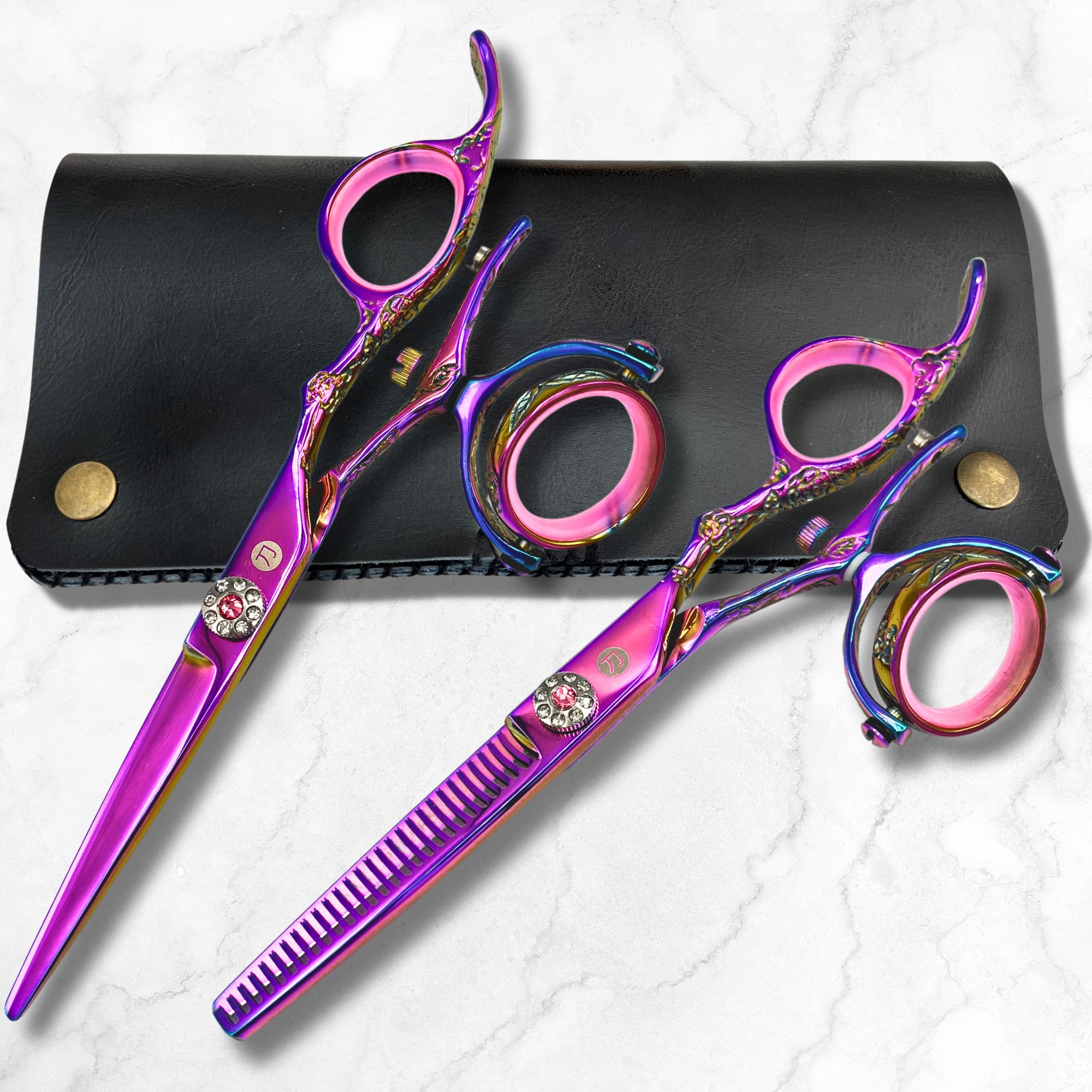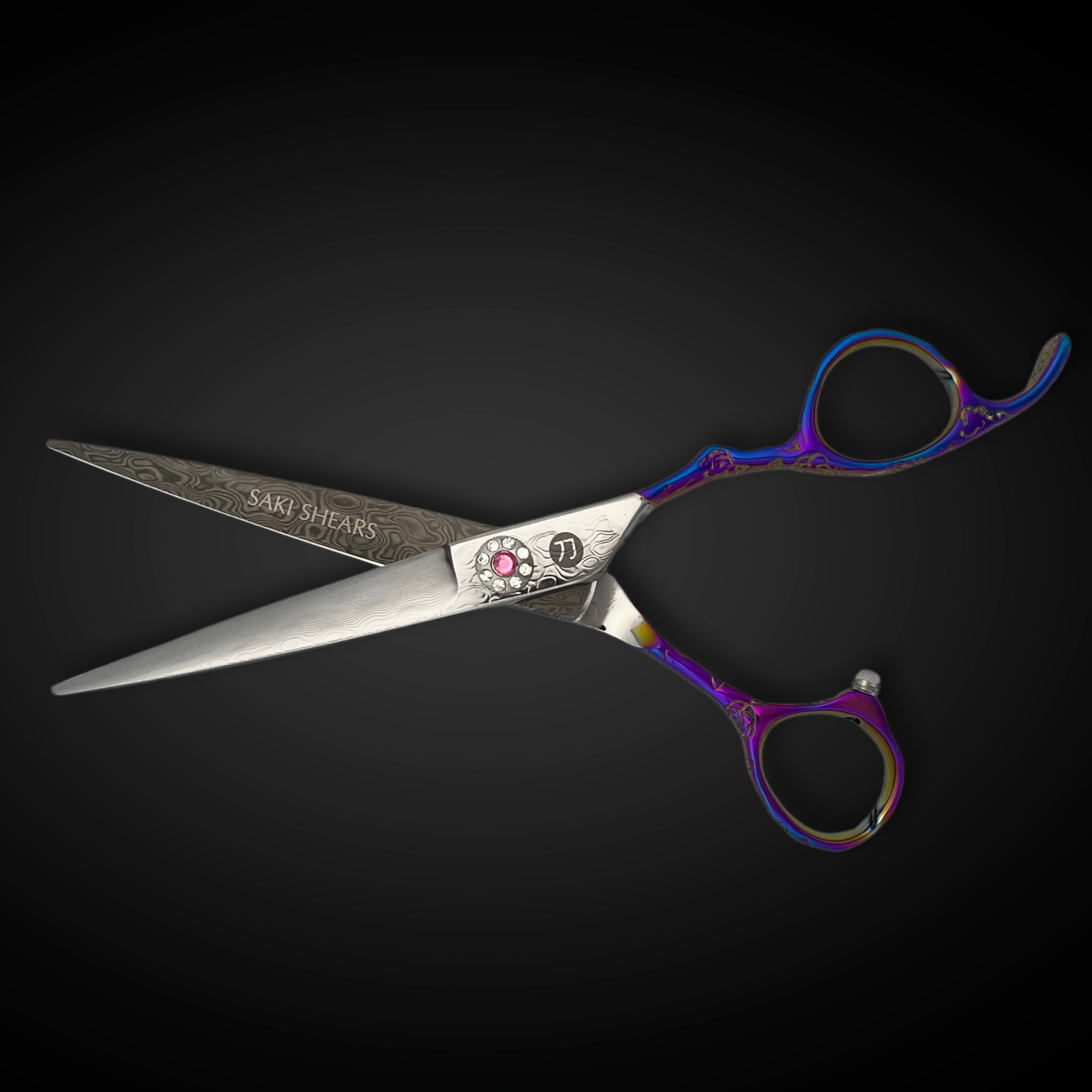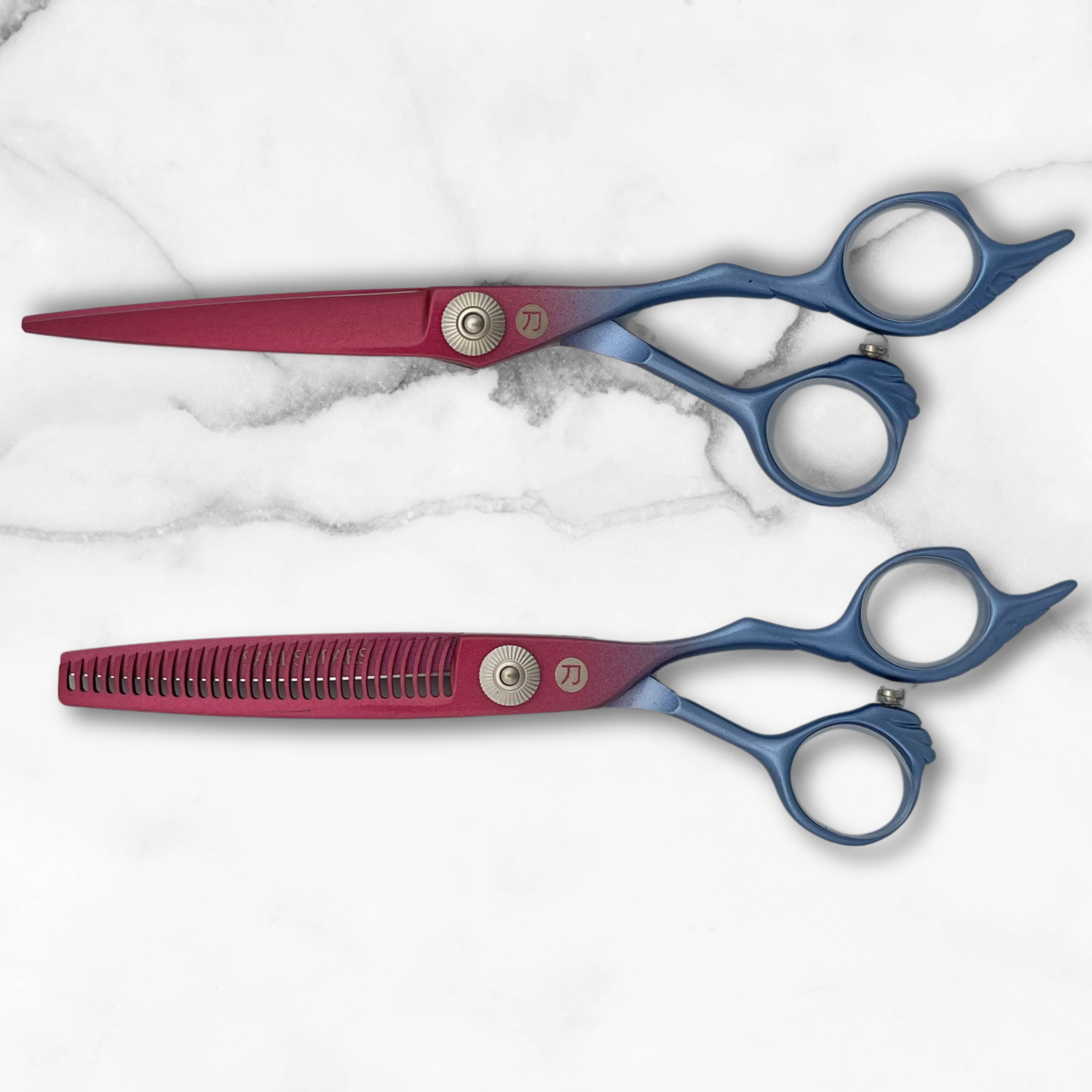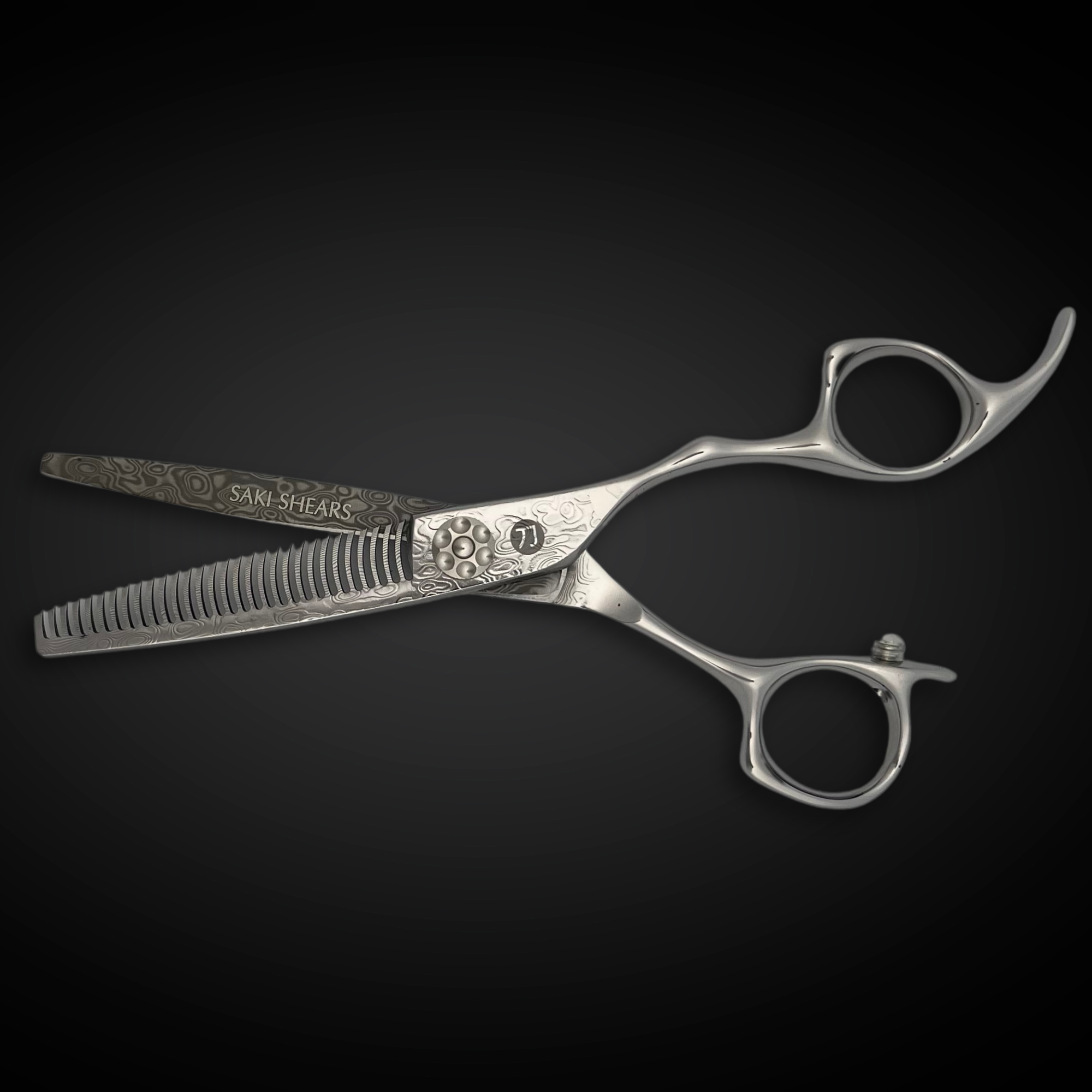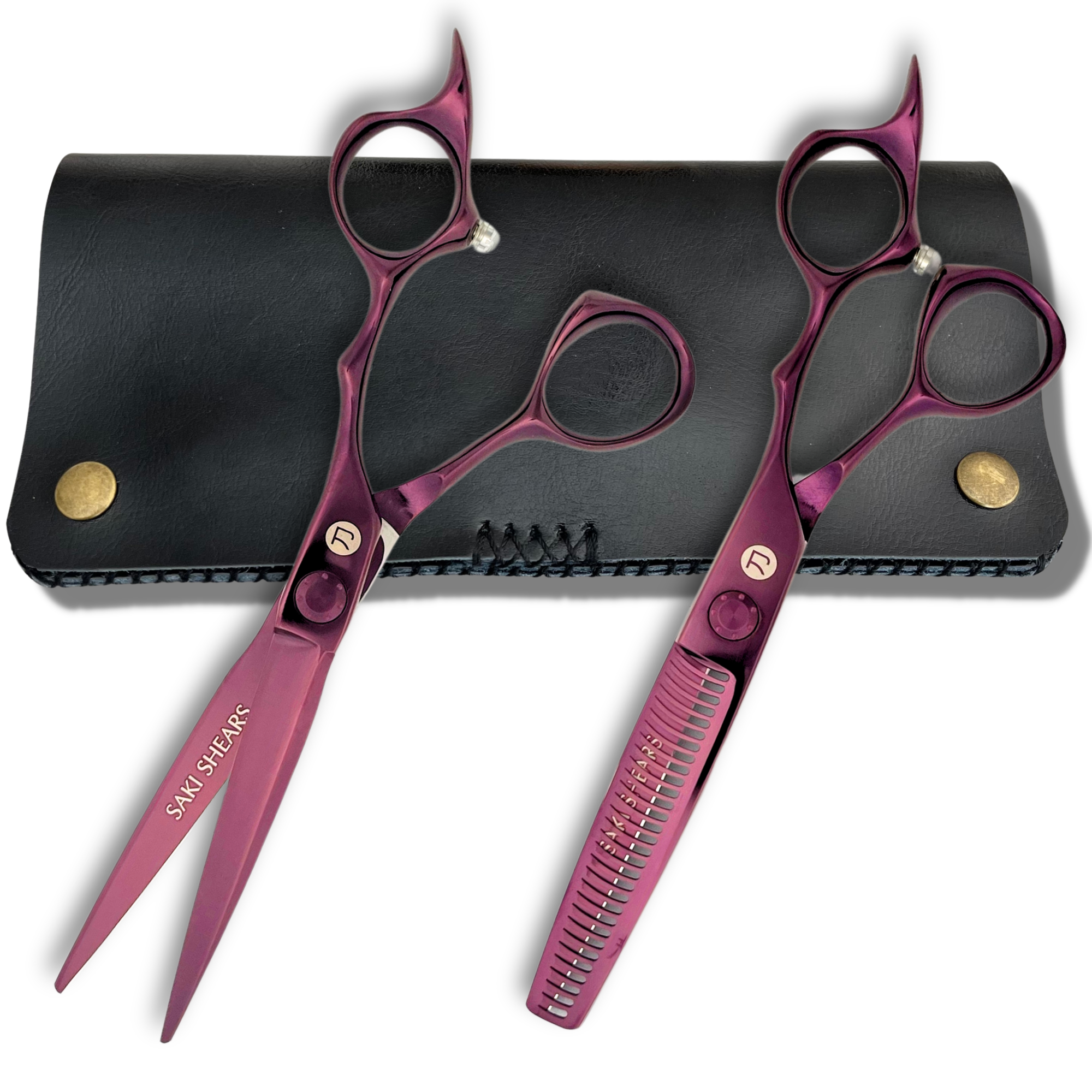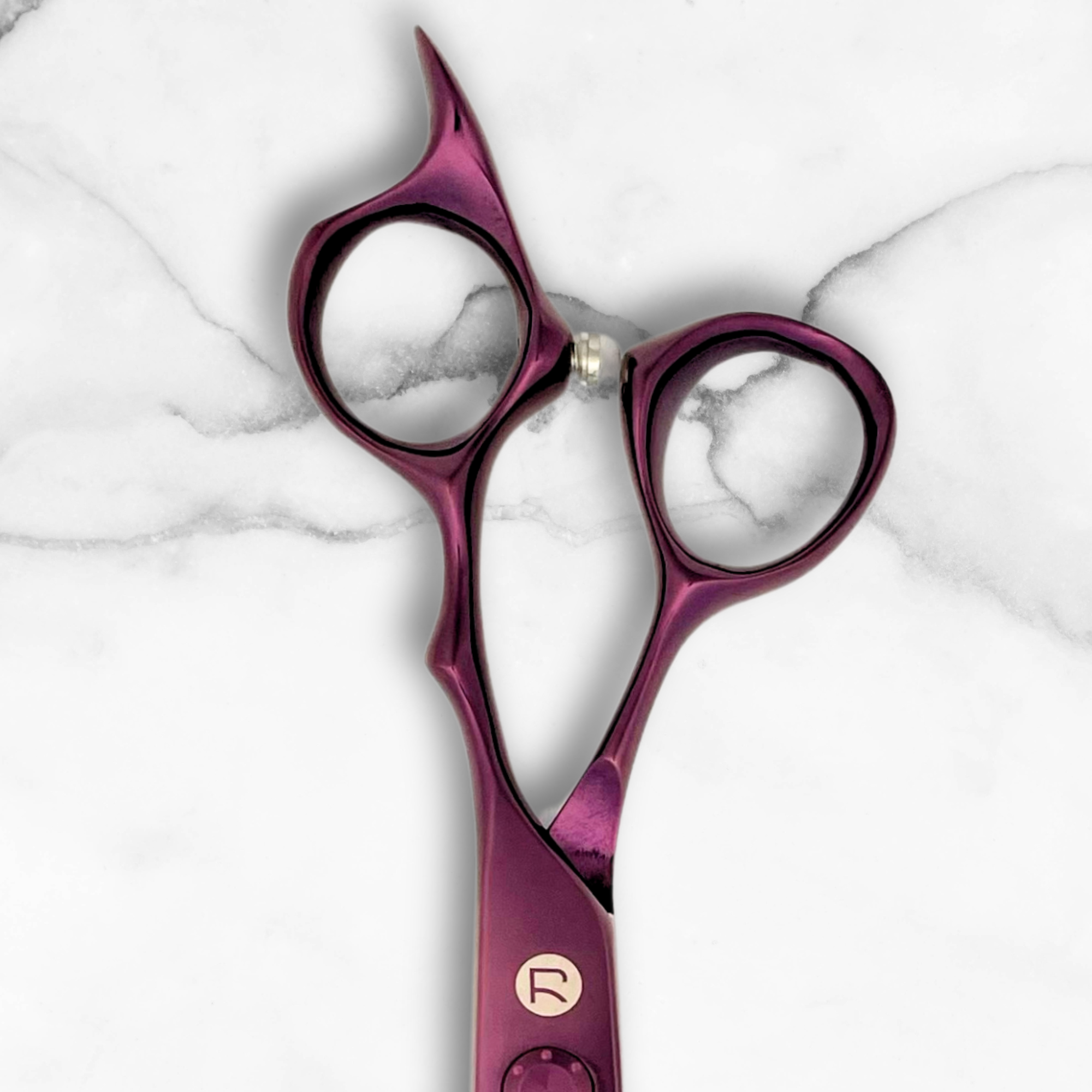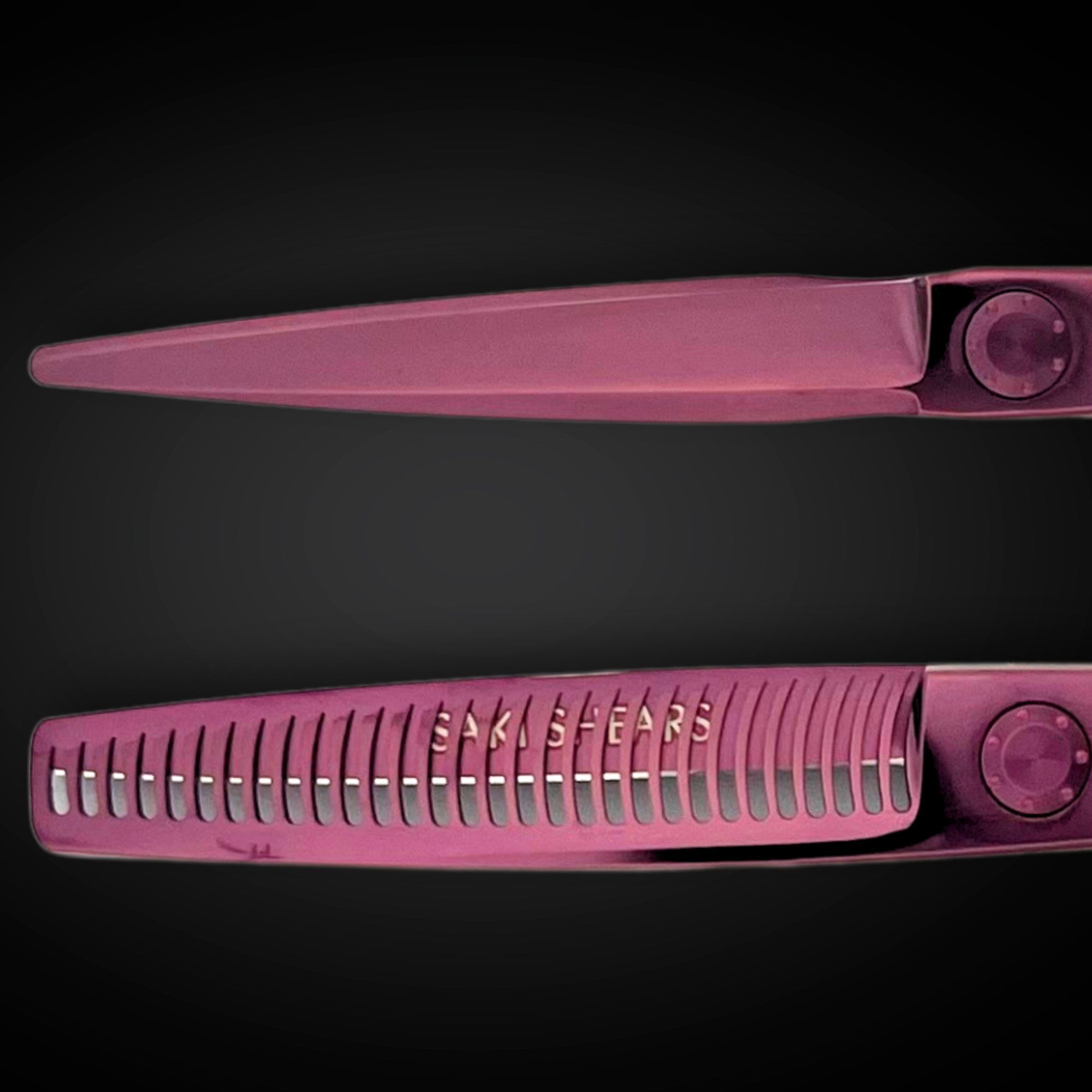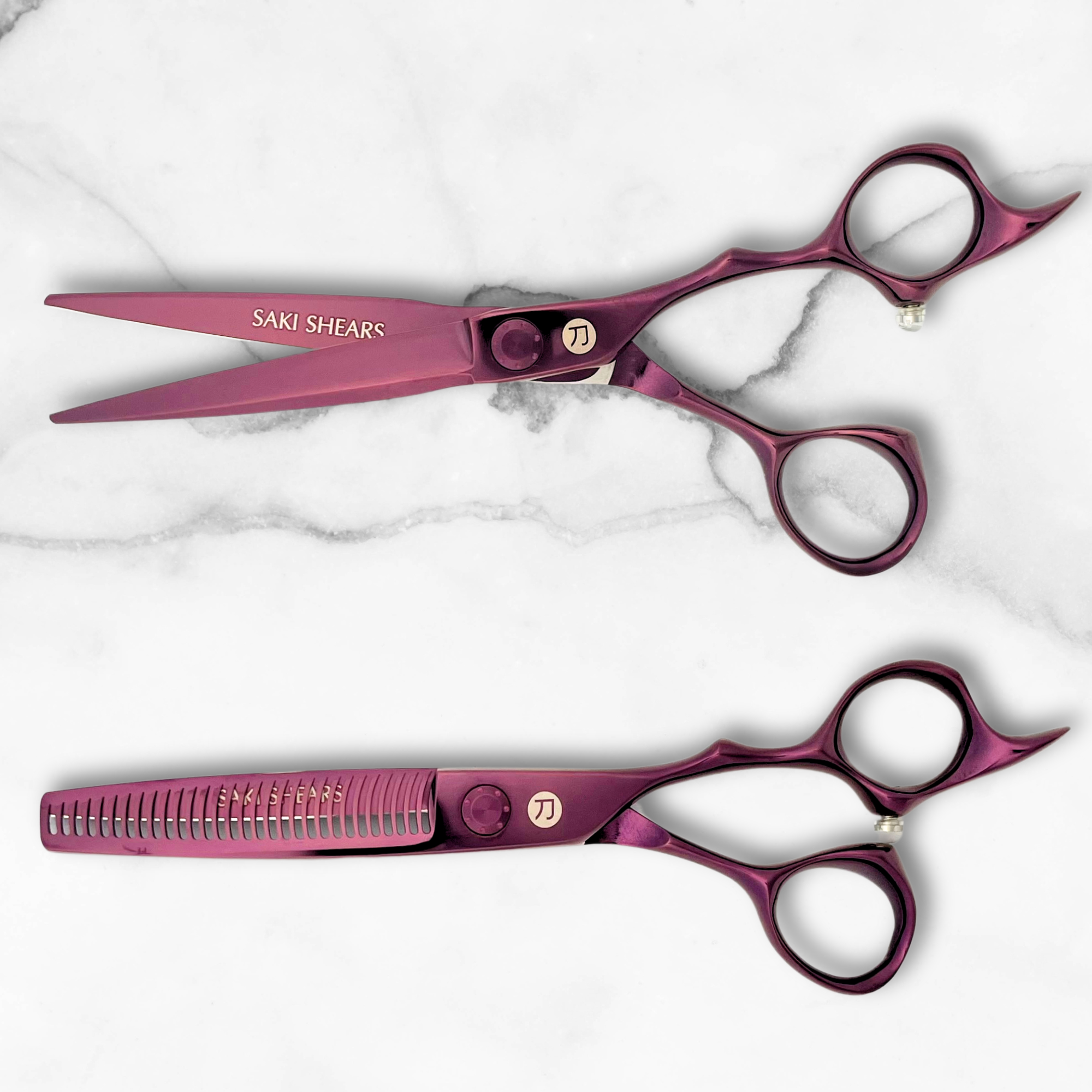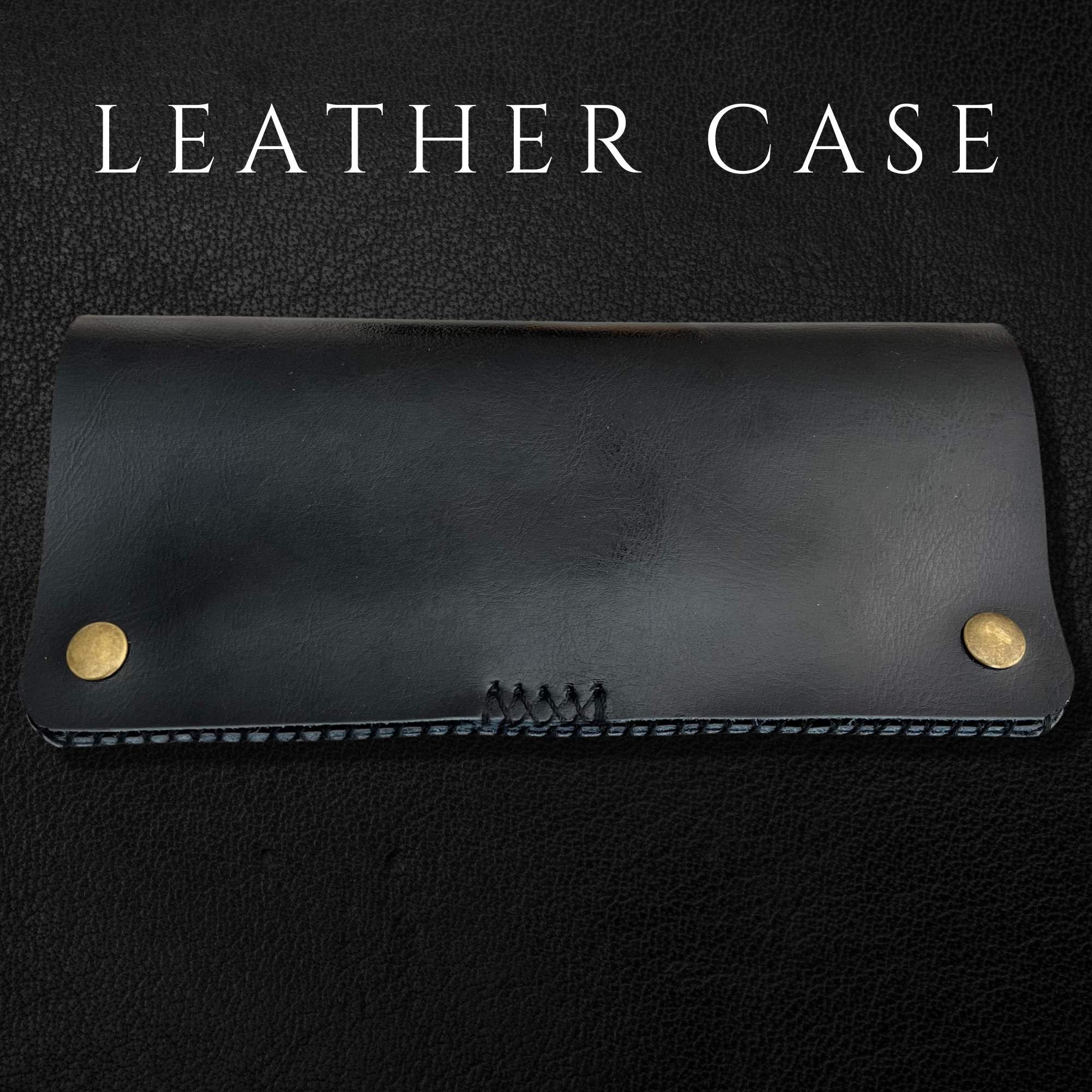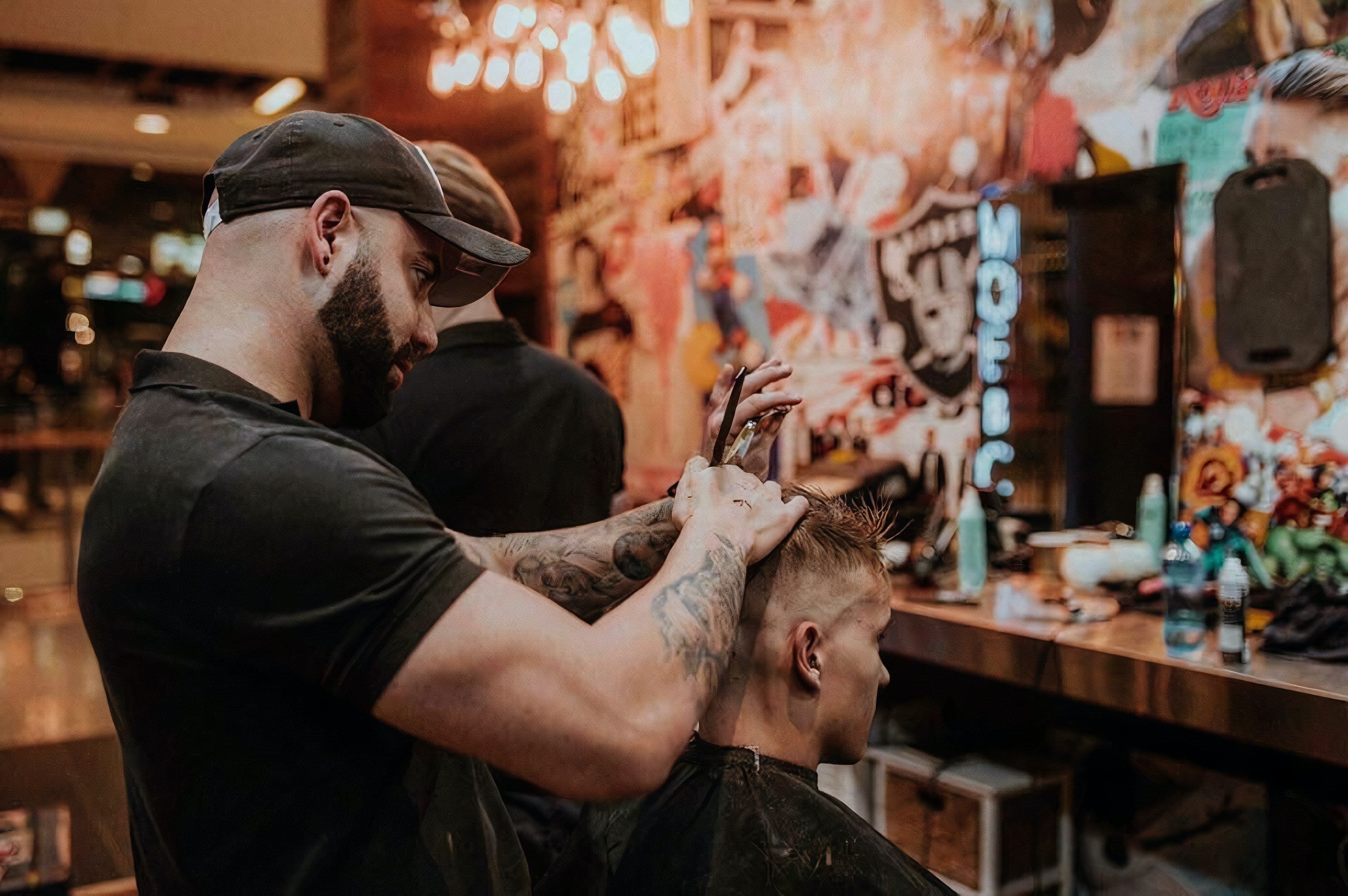Hair Stylists Need to Think About a Variety of Things When Buying a Set of Shears
Are you interested in purchasing a pair of hair shears that are designed for professionals? Make it a point to study this buyer's guide thoroughly so that you can feel assured that you will be able to determine the type of hair shears that will serve you most effectively.
Steel for hair shears
When purchasing hair shears, you will typically find either the Rockwell Scale measurement of the hardness of the steel or a listing of the presence of a hardening element used in their steel, such as cobalt or tungsten. Both of these measurements can be found on the product itself.
On the Rockwell measurement scale, the typical range of hardness for the stainless steels used in hair shears is from Rc 48 to Rc 62. Rc 54 to Rc 62 is the typical range that high-quality precision shears fall within. Shears for cutting hair that are softer than Rc 53 are often of a poorer quality. In general, the harder the steel, the more resistant it is to wear, and as a result, the edge will be maintained for a significantly longer period of time. However, a harder steel may be more brittle, meaning that it is more likely to chip or nick along the edge if it is dropped or handled forcefully. This is especially true if the steel has been heat treated.
The blades made from softer steels have a greater tendency to be more flexible, which gives the blades a toughness that makes them resistant to chipping and nicking. These softer steels also have the ability to produce a sharper edge; however, it is possible that this edge may not hold up as well over time as a less keen edge would on a blade made of a very hard material.
Different kinds of hair shears
Cutting Shears - sometimes known as hair scissors, cutting shears are a tool with a straight edge that is used to cut hair.

Shears for Thinning - the hair thinning shears are used to blend and thin the hair without affecting the style of the hair in any way. They reduce the bulk of the hair by fifty percent. One of the blades of a pair of thinning shears has a straight edge, and the other contains teeth that resemble the teeth on a comb.

Texturizing Shears - texturizing shears are used to impart style and texture to the hair as well as remove 20% of the bulk from the hair. Texturizing shears can be found at most beauty supply stores.
Lefty shears - are specifically designed for those who are left-handed and work in the hairdressing industry.
Lefty Compatible - a hair shear is said to be lefty compatible if it may be used with either the right or left hand, typically by switching the position of the handle.
Hair Shear Edges
Convex Edge: A convex edge can be used for both wet hair cutting and slide cutting. Convex edges are also utilized for trimming. In most cases, a convex edge is sharpened at an angle of forty to fifty degrees. The cutting edge of the shear has been sharpened to the point that it is almost impossible to distinguish it from the rest of the shear. You are able to accomplish tasks such as cutting slides because to the razor-like sharpness of this tool. The least amount of tension is required when cutting hair with shears that have a convex edge.
In contrast to a convex edge, which is sharpened at a 30-35 degree angle, a semi-convex edge is sharpened at an angle of 40-45 degrees.
Bevel Edge: A bevel edge is the most effective type of edge for cutting dry or greasy hair since it is sharpened at an angle of between 30 and 35 degrees.
The Custom Edge consists of a convex edge that has been sharpened on an angle between 45 and 50 degrees, and then a semi-convex edge has been sharpened at an angle that is somewhat lower than the convex angle.
Handles
An even or classic hair shear, also known as a thumbs-up shear, is used for what is known as an upcut.
Handles with offsets have finger holes that are positioned at an angle relative to the blades. This angle makes for easier and more comfortable grasping. Also known as cutting with the thumb down.
A handle is said to have a semi-offset design when the thumb holes are positioned in a position that is halfway between the even and offset positions.
Crane/Butterfly-a handle is considered to have a crane configuration when it is positioned lower than an offset handle. Those who consistently cut thumb down will benefit from using a crane handle.
Swivel or twister describes a situation in which the thumb hole can rotate through a full 360 degrees, giving the wearer the option of wearing the thumb up or thumb down.
Features
Concave Blades are those in which the central regions of each blade are slightly reduced in size, leaving only the upper and bottom edges of the blades to come into contact with one another. Both the blade and the overall experience of using the shears are improved as a result of this adjustment.
Forged: A forged shear is constructed from a single piece of metal across its entirety. After they have been forged, the shears undergo hand finishing so that they are razor sharp. Forging is the best method for producing a blade that is durable, and shears that have been forged will keep their edge for a significantly longer period of time than shears that have been produced using any other method.
Cryogenic Treatment: When steel is subjected to a cryogenic treatment, the temperature of the shear is lowered to -300 degrees Fahrenheit. This causes the steel molecules to become closer together, which results in a stronger metal.
Determine the Size of Your Shears
When selecting the appropriate dimensions for your shears, it is important to take into consideration not only the kind of cutting you will be doing but also the size of your hands.
Place a pair of scissors on the palm of your hand with the finger hole hitting the base of your thumb. The tip of the blade should be in the last section of your middle finger. This will help you determine the ideal size of shears for your hands.
The length of a pair of scissors is determined by measuring from the very tip of the blade to the end of the finger hole that is the most expansive. The finger rest is not included in this offering.
Common sizes for hair shears include:
Alignment
In order to successfully cut hair with your shears, the blades will need to have the appropriate amount of bend. Hold the shears in your hands while you carefully open and close them to check that the alignment is correct. If the blades of the scissors rub against one another, this could indicate that the scissors are not properly aligned. When it comes to opening and closing easily, a correctly aligned pair of shears is the key.

